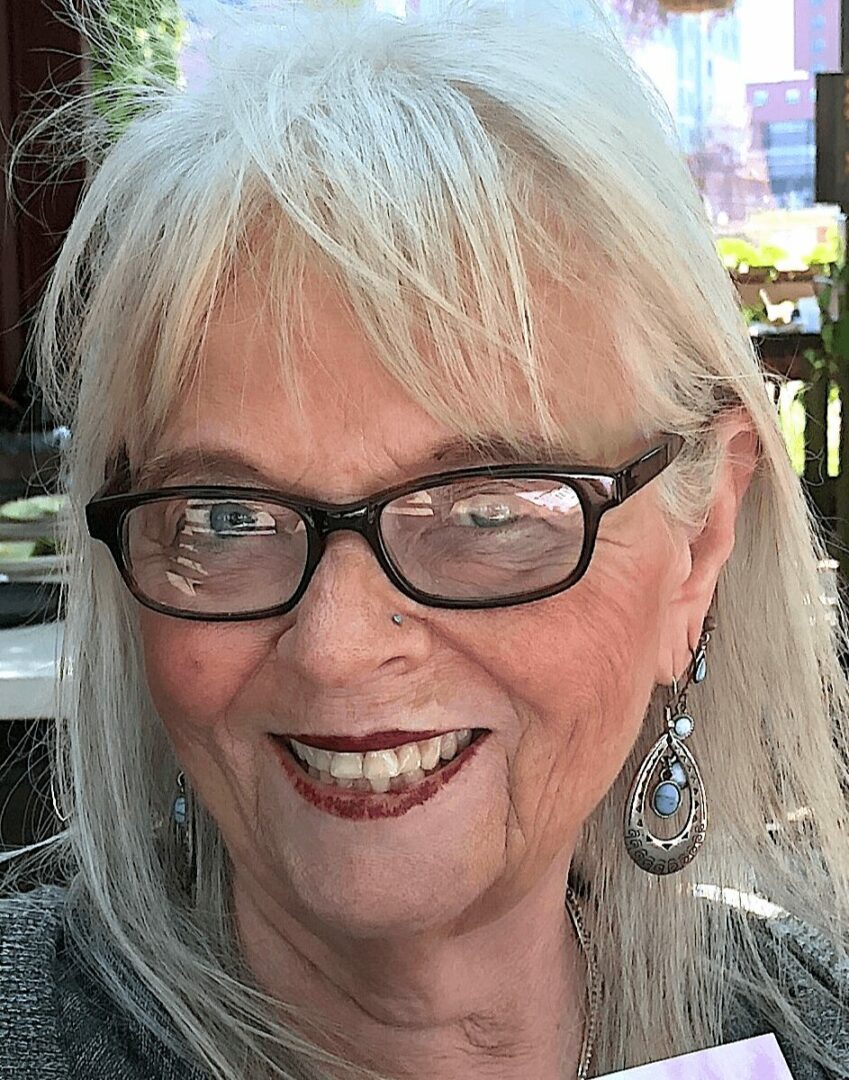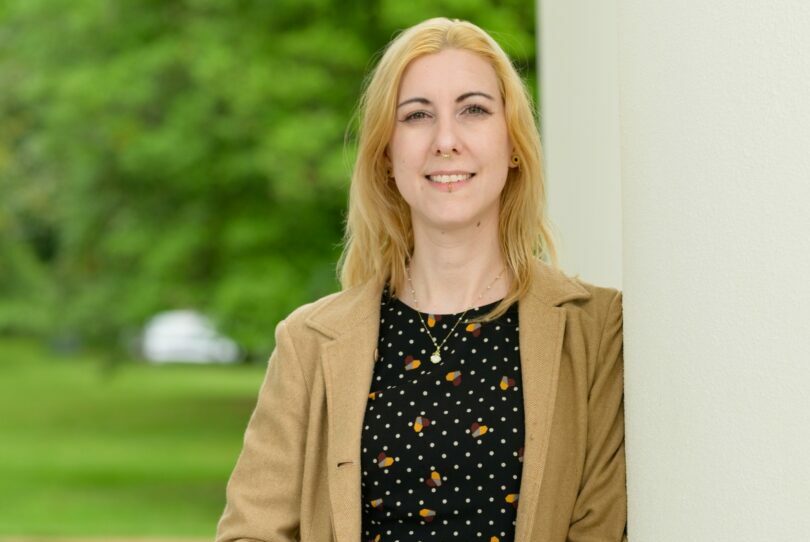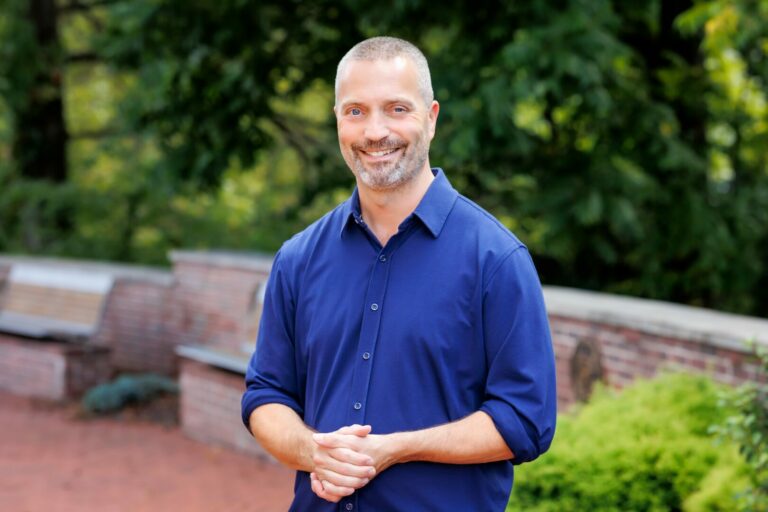We recently had the chance to connect with Donna O’Donnell Figurski and have shared our conversation below.
Donna, it’s always a pleasure to learn from you and your journey. Let’s start with a bit of a warmup: Are you walking a path—or wandering?
I like to think I am wandering along a path—a very wide and winding path. Sounds like I’m hedging, but I’m not. From the moment we squall into the world, we are on a path. At first, we don’t have control over the course we’re on. Our parents, extended family members, friends, and teachers lend a helping hand. But soon, we begin to make our own decisions. I see this clearly with my three-and-a-half-year-old granddaughter. She definitely has a mind of her own and undoubtedly knows how she wants her three-year-old life to look.
Though I don’t remember my early years and I don’t remember if I had any direction, I know I grew up with my siblings, went to the school of my parents’ choice, and walked a narrow path. But as an adult, I branched out. Still, I wasn’t sure where I was headed. I went to college, got married, and had two children. My path was still narrow—too narrow for me, and so I wandered—looking for more—looking for me.
I went to school for cosmetology and worked in a beauty salon, styling, dyeing, and perming hair. I liked it, but when my husband and I moved across the country, my New York cosmetology license was not valid in California. So I became a stay-at-home mom for a while–until I stumbled on volunteering in my daughter’s first-grade classroom. My natural ability as a teacher did not go unnoticed, and my first-grade teacher and mentor encouraged me to return to college to get my early-childhood teaching license. I did! I finally found my direction, and I followed that path for more than thirty years. But one path was never enough for me, and that is where the wandering comes in.
It seems that one thing always leads to another. As a first-grade teacher, it was my responsibility to teach my students to read, write, and do math. How fun! What better way to teach children those skills than through reading picture books to them? I’ve read thousands of picture books to my “kiddles.” (Some titles, countless times.) Reading kids’ books led me down the path of writing them. I mean, how hard can it be? Indeed! That is what most folks think. Picture books are short; the concept is simple—and they are just for kids. All true! And that is exactly what makes them so difficult to write. A clear, concise story that flows with expressive imagery and vivid language with only three to five hundred words is required to snare the attention of even the youngest critics and, more importantly, the imaginations of their parents, who are the ones with the cash to purchase those books for their kids. No pressure there! I wandered down the path of children’s literature, and I have written more than twenty children’s picture-book stories. Four of my stories were published with Scholastic Education, but I am still searching for publishing-homes for the rest.
In early 2005, I veered off that path when my husband, David, had a traumatic brain injury. My life was engulfed with his survival and keeping my head above water. It was then that my path twisted again and took another turn. This time my writing focused on adults—something I hadn’t anticipated. But I knew that I had to share our story—the story about how one sunny morning, David did thirteen chin-ups–one more than he religiously did every day—the story about how that thirteenth chin-up changed our lives forever. He had a subarachnoid hemorrhage, which resulted in three brain surgeries. David’s traumatic brain injury sent me hurling right alongside him down a deep and dark path, but at least we spiraled out of control together. My writing for children was thrust to the back burner as I wrote my book about David’s life-threatening injury and of both his and my journey back from the edge. PRISONERS WITHOUT BARS: A Caregiver’s Tale was published in 2018 by WriteLife Publishing. If PRISONERS helps even one person, I will be happy.
My next path steered me into the world of art, as I became immersed in jewelry-making. In the quiet of my studio, I found an escape that not only calmed me but also revived me. I lost myself in the colorful beads, gems, and stones I used to design and create necklaces, earrings, and bracelets. It was a welcome diversion from the weight of David’s brain injury.
The art world has many trails, and I love wandering them. I am bewitched by a relatively new art form called alcohol ink painting. With a special kind of ink and isopropyl alcohol, ceramic tiles or non-porous paper, and a few ink-blending tools like cotton swabs, air blowers, and straws, I’m mesmerized for hours as I watch colors swirl and bump into each other to make amazing one-of-a-kind art pieces.
The theater is another path I have wandered on—for nearly ten years. I’ve worked on stage as an actor and backstage as a stage manager and as an assistant director. For many years, I have also been the theater’s photographer. I even wrote my own play (based on the picture-book text I wrote for a children’s book submission,) produced it, directed it, and received a standing ovation for it. It doesn’t get better than that.
I have many paths, and I’m eager to wander on––maybe skydiving or swimming with sharks—ah, probably not!
Can you briefly introduce yourself and share what makes you or your brand unique?
I’m a chameleon. No, I don’t have a projectile tongue, zygodactylous feet, or a prehensile tail. Honestly, I can’t even pronounce those words—and I surely don’t know what they mean. But like a true chameleon, I can change, blend in, and adapt to whatever situation life throws my way.
I was born in a tiny town south of Pittsburgh, Pennsylvania. My name was supposed to be Jacqueline—Jackie for short—but I returned from my christening as Donna Marie. I’m told my father changed it. So, you see, from the very beginning, I was destined to adapt to whatever life handed me–to morph into whatever surroundings I found myself in.
I grew up as the oldest sibling in a relatively normal family, with two brothers and two sisters. I took piano lessons, played the trumpet, and cheered for the boys’ basketball team in elementary school. I knitted, read voraciously, and studied Spanish in high school—eventually becoming president of the Spanish Club. I even played the lead in a school play, Marcelino Pan y Vino.
Up to that point, nothing in my life had been particularly astounding or earth-shattering. I went to college as a Spanish major and loved it. But in my second term, everything shifted. My parents announced their big “D.” I was already struggling with algebra and statistics, and though I could have pushed through and passed, I quit college. I simply couldn’t face my parents’ divorce. My inner chameleon—so good at adapting—failed me.
It took a few years before my chameleon found her colors again—but she’s a strong and determined creature. I married my best friend, raised two children to adulthood, and now delight in my three grandchildren. Over time, I became a teacher, a writer, an artist, an actor, a stage manager, and a photographer. Then, in 2005, I morphed once more—this time into a caregiver for my husband, David, after he suffered a traumatic brain injury. That unexpected and life-altering event led me into the roles of:
Web Blogger (https://www.donnafigurski.com/)
Website Creator (https://survivingtraumaticbraininjury.com/)
Radio Host (https://www.spreaker.com/podcast/another-fork-in-the-road–6469434)
Profile Subject for many articles and podcast interviews surrounding brain injury.
Here are a few shows or articles you may want to peek at:
Article: Canvas Rebel https://canvasrebel.com/meet-donna-odonnell-figurski/
Podcast: Healthy Happy Caregiver, with Host, Elizabeth Miller https://happyhealthycaregiver.com/podcast/donna-odonnell-figurski/
Podcast: Bump in the Road, with Host, Pat Wetzel https://bumpintheroad.us/donna-odonnell-figurski-love-dedication-and-persistence/
My chameleon shifts with my moods. One day, she’ll immerse herself in designing jewelry—earrings and necklaces. On another, she’ll swirl alcohol ink across tiles, creating vibrant abstract art. She’ll peer through her camera lens to capture the powdery wings of an injured monarch butterfly or a whale “lobtailing” (slapping its tail against the water with powerful grace). She’ll write too… and who knows what else? After all, she’s a chameleon—free to be anything she wants to be.
Appreciate your sharing that. Let’s talk about your life, growing up and some of topics and learnings around that. What relationship most shaped how you see yourself?
It’s never only one relationship that molds you into who you are. They say “it takes a village,” and it does.
I had a rocky start on the path to a career. When I graduated high school, I knew I wanted to be a flight attendant. I applied to every airline, but each application was returned with two scarlet letters—N-O. I didn’t meet the height requirement—I was too short. That was a challenge I couldn’t overcome. I simply could not grow one iota more. That was a huge letdown, and it was the first tear in the cloth of my childhood motto that my father had instilled into me: You can be and do anything you want to if you work hard enough. As you will see, I would have to remind myself of that motto often.
I stumbled down countless roads in search of myself, taking many detours along the way. I was a receptionist at the University of Pittsburgh in Pennsylvania and later at the University of Rochester in New York. I went to cosmetology school and worked for a while as a hair stylist. Though each of those jobs was interesting, I wasn’t fulfilled. I was still searching—for what, I didn’t yet know.
In my late twenties, I set my mind on becoming an early-childhood teacher. At the time, I was not only the mother of two young children, but I was also working as a teacher assistant in early-childhood classrooms. My mentor teachers recognized my innate ability to teach. They knew what I didn’t—that I was born for the classroom. With their nudges and my husband’s encouragement, I returned to college to pursue my teaching degree.
Frankly, I don’t know how I pulled off that juggling act. I worked all day. Then I hastened home to visit with my husband and children and dashed off to my night college classes. For three long years, I stuck to that schedule—until the day I graduated with honors and flung my mortarboard into the air with my fellow students.
I know it was my mentors’ belief in me that helped to shape my future. They became part of my “village.” Of course, my husband, David, was behind me every step of the way. I had a wonderful and fulfilling career as a first- and third-grade teacher for over thirty years. But, even with a satisfying career in teaching, I sought more. Over time, my path broadened.
After taking a writing course at Teachers College, Columbia University, I got caught up in the net of children’s picture-book writing. It’s one of the most difficult challenges I’ve ever taken on–right up there with childbirth and maneuvering through the maze of my husband’s brain injury. Since 1994, I’ve written and submitted more than twenty stories—some in prose, some in rhyme—to agents and editors I’ve met through writing conferences and workshops around the country. I’ve received my fair share of rejection letters, many of them the dreaded form-kind: “Dear Author, Blah, blah, blah. Sincerely, The Editor.” But I’ve also collected good rejections—ones that offer a glimmer of encouragement. Those “good rejections” are my carrots. They are the voices of the editors and the agents that keep me focused and moving forward. It’s their reminder that, though they may love my story and feel it’s amazing for kids, it just isn’t timely for their marketing list. They don’t know it, but with their kind words, they are part of my “village” too.
But still, even the “good rejections” whisper doubts. Maybe my writing isn’t good enough. Maybe my stories don’t matter. Maybe I’m delusional for thinking my books could ever share space on bookstore or library shelves alongside Mem Fox, Kevin Henkes, and Laura Numeroff—just a few of my favorite children’s picture-book authors. Each rejection leaves a mark—another small tear in the fabric of my confidence that urges me to believe in me.
Fortunately, my stubbornness won’t let me give in or give up. I now write for adults as well as for children. My award-winning memoir about my husband’s brain injury has been published, a manuscript about how to teach young children has been submitted, and a third manuscript – this one about brain injury – is being revised by me and a co-author.
In recent years, I’ve focused on the world of art. I’ve immersed myself in making jewelry and alcohol ink painting. Both transport me to another world. I zone out while creating or designing new art pieces. I am grateful to my fellow artists, who have worked by my side and bolstered my confidence.
My husband, David, always encourages me. He reminds me that my stories matter, that my artwork is beautiful, that my work has value, that I am worth it, and that I am making a difference in the world!
I’m slowly beginning to believe in myself. The fabric of my father’s advice that I can be and do anything I want to if I work hard enough is torn but not shredded. I’m repairing that torn fabric.
Was there ever a time you almost gave up?
Let me think about that. Was there ever a time I almost gave up? Well, just about a gazillion times.
Usually, I’m strong. I face my problems and solve them as best as I can. When I wanted to become a teacher, I struggled to make it happen. It was difficult, but the hard work didn’t scare me. Sure, at 3:00 A.M., during those all-nighters—guzzling coffee and trying to keep my eyes open while completing assignments or studying for exams—I probably thought about quitting. By 4:00 A.M., when all I wanted was my fluffy pillow and my soft bed, I undoubtedly questioned the worth of that teaching license—the one that would allow me to follow my dream into a classroom of first graders. But the sign posted outside my classroom door for more than thirty years was proof that I didn’t give up.
Mrs. Figurski
Room 106
1st Grade
In the early part of my teaching career, I enrolled in a class at Teachers College, Columbia University, in New York City to enhance my teaching of writing to first graders. One Friday, I sat in a classroom with a group of fellow early–childhood educators who squirmed when our professor scrawled our assignment on the chalkboard: Write a children’s picture book. Due Monday.
That weekend, I sat on my deck playing with words, stringing thoughts together, writing a children’s story with a beginning, a middle, and an ending with an arc and a twist. Where that story came from, I’ll never know. I remember struggling to drag words from my head, trying to make sense of the story. Whoever said that writing for children is easy never wrote a children’s picture book.
Monday came too soon, and we read our stories out loud in class. I trembled as my turn neared. I was afraid that my story, Too Many Bubbles, was silly—not good enough. I read about bubbles—too many of them. They popped in a bathtub and on an elephant’s toes. They jumped through fiery hoops and traced loop-de-loops. Bubbles were everywhere! Imagine my surprise when I finished reading and my classmates cheered. They wanted to read it to their students. My professor loved it and urged me to publish it—my first picture book manuscript!
I didn’t know that when I stepped onto that writing path, I would still be trudging along it thirty years later. I didn’t realize how arduous a task attempting to publish a picture book would be. The only thing I was sure of was that I was hooked on writing. So I wrote! I wrote at least twenty more manuscripts and submitted them to more than thirty publishers and agents. But I have signed no contracts for any of my picture-book manuscripts. That means that I’ve received a lot of rejections. Rejections are like big fat Fs on exams that you studied for for hours—exams that you put your heart and soul into and still failed. No wonder that after ten years I wanted to give up. But I didn’t. After twenty years with no picture book or contract in hand, my feelings of quitting grew stronger. But I didn’t quit! My fear of failing outweighed the hard work I must do to make my dream happen. So I continue to write even after thirty years of delusion. Cross your fingers and your toes for me.
In 2005, my husband had a traumatic brain injury. The brain bleed was called a “subarachnoid hemorrhage.” When I met the neurosurgeon, he gleefully told me that my husband was in good health. I sighed in relief. I guessed it was David’s wholesome living, his running miles each week, and the vitamins that he swallowed each day that contributed to his good health. But the neurosurgeon’s next words made me gasp. “Your husband will make a great organ donor.” My mind went into overdrive. That was not going to happen! All I could think of was that the doctor had someone in the wings waiting for a heart, lungs, or liver. It wasn’t going to be David’s. I told the neurosurgeon to go save David’s life. I whispered to my unconscious husband that I would never forgive him if he didn’t come back to me. My pleas must have worked—both of them. The neurosurgeon did his job, and David did survive, but not before he endured two more open brain surgeries. It would have been easy to give up during that dark, scary time, but instead, I had to be stronger than ever. I had to be strong for David too. You can read our story in my award-winning memoir, titled Prisoners Without Bars: A Caregiver’s Tale, about my husband’s and my journey through the brain-injury maze. Again, I didn’t give up, and I didn’t let David give up either.
Giving up is not a bad thing. After weighing the pros and cons, sometimes it’s the right thing to do. But for me, giving up, though I may think about it and would like to succumb to it, is simply not an option.
I think our readers would appreciate hearing more about your values and what you think matters in life and career, etc. So our next question is along those lines. What’s a belief or project you’re committed to, no matter how long it takes?
My dedication to writing children’s picture books has never wavered since I committed to that dream more than thirty years ago. Over the years, I’ve read my stories to hundreds of first graders––and they loved them, even without illustrations!
You might think my classroom-based experiment was biased and not a fair testing ground. Of course, my students would love my stories––they loved me and wanted to please me. That’s a fair assumption. I thought so too. If I truly wanted an unbiased evaluation of my stories, my students couldn’t know I was the author.
That’s when “Neely Foster” was born.
Neely Foster became a “real” author in our classroom—just like my favorite authors, Robert Munsch and Nadine Bernard Westcott, and my author friends, Robin Pulver and Paula Danziger. (And yes, my favorites list goes on and on.)
I used colorful markers to write my stories on flip-chart paper, laminated them, and hung them on the easel for easy access. After lunch each day, during our post-recess wind-down, I’d read a story—sometimes from our classroom library and sometimes one of Neely Foster’s books, like What’s for Lunch, One Green Apple, or Too Many Bubbles.
During free-choice time, pairs (or small groups) of kids would sprawl on the floor, reading together–flip-chart books spread out in front of them. My heart swelled watching them enjoy my stories—reading the words I had pulled from my brain to create silly, heartwarming, empowering, quirky, and rhythmic tales.
I began this journey more than three decades ago, and I have continued nearly every single day since. I’ve dreamed of sharing my stories with children all around the world. I’ve written more than twenty picture-book manuscripts—all still waiting to be discovered.
Here are a few of the characters who live in my head:
• Kanona Prattsby is an eccentric, small-town granny, determined to be unique and independent. “No house in this town will be painted like mine. Not a store. Not a lamp post. Not even a sign,” she declares. But the townspeople have other ideas.
• Casey In Casey’s Show-Off Fiasco, Casey is a girl with low self-esteem who worries she’s not good at anything. Everyone in her class seems to have a talent—except her. But when a teardrop lands on her pencil, Casey discovers she has a unique and special talent.
• Busy Lizzy is a whirlwind of child’s play. The story is peppered with bouncy language. Lizzy whirls through the day with jigs, kites, puddle-splashing, and endless energy. From morning stretch to goodnight yawn, Lizzy never stops––until she finally snuggles into bed and dreams in the moonlight–and waits for a new day to dawn.
Some of my stories are magical. Some are warm and fuzzy. Others are bold or quirky and pose serious questions. Some make kids laugh. Others make them wonder. I want my picture books to connect children to the world around them—and to themselves. They’re not just stories for entertainment; they’re tools for empathy, identity, and imagination.
I love writing picture books. Don’t ask me where my stories come from. I don’t know. But I do know that I’m still patiently (okay, not so patiently) waiting to sign on the dotted line of a picture-book contract. (Maybe twenty of them!)
I hope my dream happens in this lifetime.
Okay, we’ve made it essentially to the end. One last question before you go. Are you tap dancing to work? Have you been that level of excited at any point in your career? If so, please tell us about those days.
I meandered before I found my career path. But, once I discovered how much fun and how fulfilling teaching young children was, I tap-danced to work every day for more than thirty years.
That isn’t to say I woke up tap dancing. I am not a morning person, but the moment I entered Room 106, I came alive.
I won’t pretend that I loved the mountains of administrative paperwork––writing lesson plans, documenting daily behavior logs, and preparing extensive individual education plans to modify and accommodate the learning needs of some students––but I was always eager to live alongside my six- and seven-year-old students every single school day.
I know that, in general, children want to please, but they crave attention—and instant gratification. (Honestly, many adults still crave immediate attention.) I was reminded of that intense need of young children every first day of school, when about twenty-five students tugged on me all at once and their big voices vied to capture my attention. It felt like they all needed me––instantly. That’s just the nature of the beast … I mean “the little ones.”
Though most children want to do their best, sometimes they simply don’t know how. They haven’t yet fully learned acceptable social behavior, and so they may act out in negative ways to garner attention. Pushing classmates, disrupting lessons, and refusing to follow directions are all ways a child is pleading for help. Often children use those tactics out of frustration because they are unable to communicate their true needs. They use negativity to let others know that they are not invisible.
There are also those children who easily fall through the cracks. I call them the “silent types.” I remember Lily, a little girl who never made a peep. She was well behaved and worked harder than many of her classmates—but she continued to fall further behind. I knew she was trying, and I knew she had a strong support system at home. But she worked at a snail’s pace, and I worried. I was concerned that Lily wasn’t keeping up, that she wasn’t learning to read or do math, and that she wouldn’t be ready for the challenges of second grade by the end of the year.
Fortunately, Lily made the cut—she squeaked by––but I watched her closely from afar the following year. I saw her struggle through second grade, and I couldn’t help but wonder: Should I have retained her? Would that extra year have made the difference? (You know what they say about hindsight.)
When Lily moved to third grade, so did I, and I was excited to have her in my class again. Not much had changed—she was still a slow, deliberate worker.
But around April of that year, something happened. Something magical. Lily’s work improved drastically. Her pace picked up. She started earning A’s—on spelling tests, math tests, science tests—everything. What caused the change? Maturity? School and learning readiness? All of the above? I don’t know. But something clicked, and Lily easily moved onto fourth grade. I was so proud of her. I called her my “blooming flower.” At report-card time for her next five years in elementary and middle school, Lily would pop into my classroom waving her report card—always with straight A’s.
Sometimes, kids just need time. What a powerful lesson that was—for Lily and for me.
So, although I was joyful at work, it was not all fun and games. I learned to not judge children by their outward behaviors. I learned to peel back their layers to uncover their struggles. I learned that I had to be their cheerleader––which wasn’t always easy—and I didn’t always succeed. But I had some notable successes. And I understood that I could learn from my students just as they could learn from me.
When I’m not busy running a household and caring for my family, I enjoy many activities that make me want to dance. I’m able to zone out for hours when I get lost in a book, whether I’m reading one or writing one. When I’m designing jewelry––necklaces, bracelets, and earrings––I become totally engrossed. That same magic happens when I paint with alcohol inks to create beautiful, one-of-a-kind tiles or yupa paper abstracts. At the theater, which feels like my home away from home, I blend into the darkness backstage as I keep a vigilant eye on actors and their entrances and exits to guarantee that the show runs flawlessly.
And sometimes I really get to dance. If you peek through my window on a weekday afternoon, you might hear strains of the ballet The Dance of the Sugar Plum Fairy by Tchaikovsky blaring from my computer. You might see my three-and-a-half-year-old granddaughter and me pirouetting (more like cavorting) around the room. On other days, we might express ourselves through interpretive dance using moves reflecting our emotions or moods. We call it “free form.”
Through it all, I’ve learned over the years that I can find joy in most everything I do. (Well, maybe not paying the bills or taking out the trash!) When I’m engaged in something I love, you could say I’m dancing through life.
Contact Info:
- Website: https://donnafigurski.com
- Instagram: dmodfigs instagram.com/dmodfigs/
- Linkedin: Donna O’Donnell Figurski linkedin.com/in/donna-o-donnell-figurski-72963453
- Twitter: X (Twitter) @DonnaFigurski twitter.com/DonnaFigurski
- Facebook: Donna O’Donnell Figurski, Author facebook.com/Donna-ODonnell-Figurski-Author-658771187875721/
- Youtube: @donnaodonnellfigurski9390 youtube.com/channel/UCkoclskoaz64XnutottX1DQ?view_as=subscriber
- Other: Amazon – Prisoners Without Bars: A Caregiver’s Tale: amazon.com/Prisoners-Without-Donna-ODonnell-Figurski/dp/1608082059/ref=tmm_pap_swatch_0?_encoding=UTF8&dib_tag=se&dib=eyJ2IjoiMSJ9.-2mbgxUya3fuLmmIRwwV4g.UPgCHOEDiKK4ag0Zgc8zIWMtoqsi3jUzmR6XNjkd7AI&qid=1745454303&sr=1-1
Personal Blog – Bookity Blog: donnafigurski.com/bookity-blog
Brain Injury Blog – Surviving Traumatic Brain Injury: survivingtraumaticbraininjury.com
Donna O’Donnell Figurski Blog: donnaodonnellfigurski.wordpress.com/
Pinterest: Donna O’Donnell Figurski. pinterest.com/odonnellfigursk/ donnaodonnellfigurski
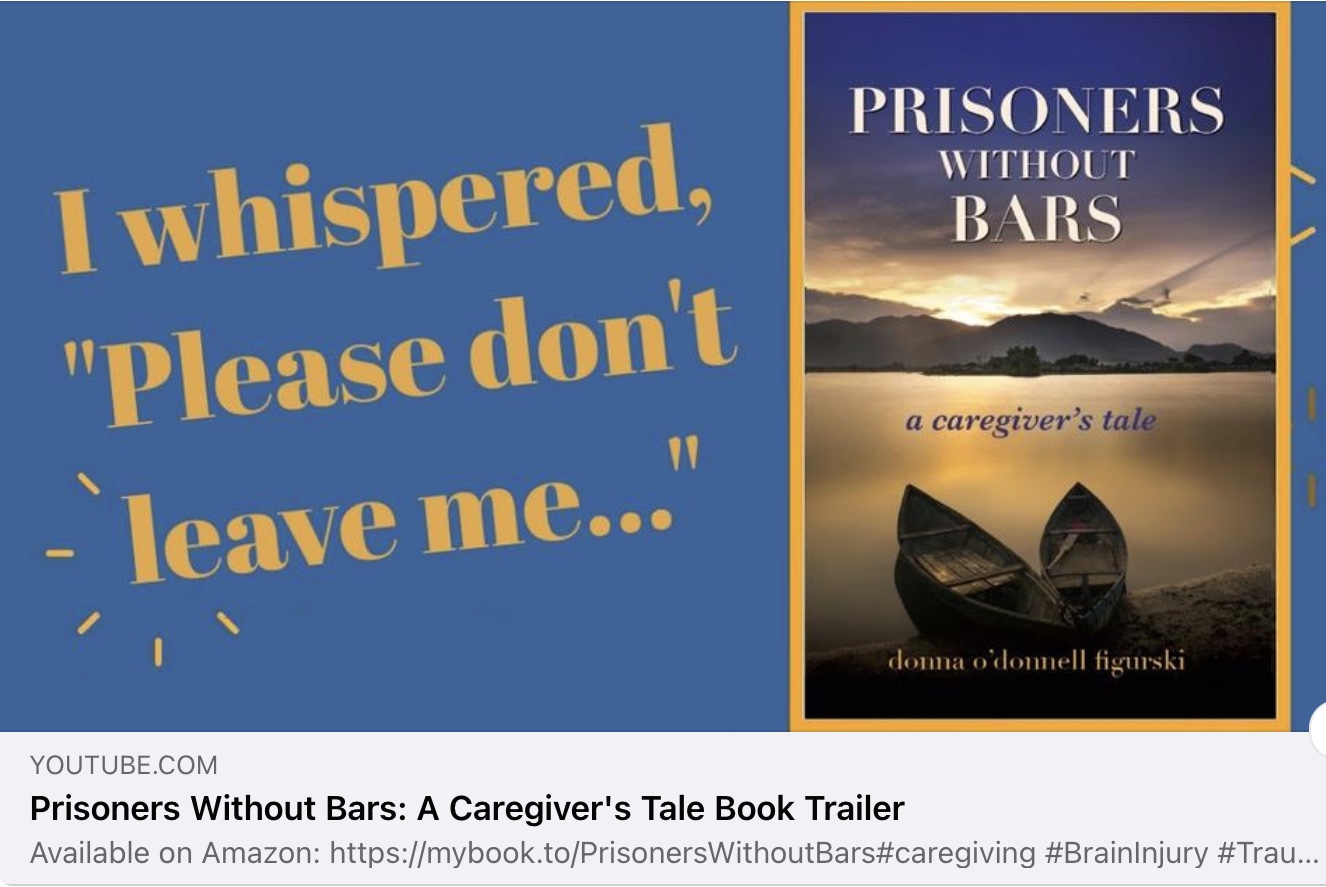



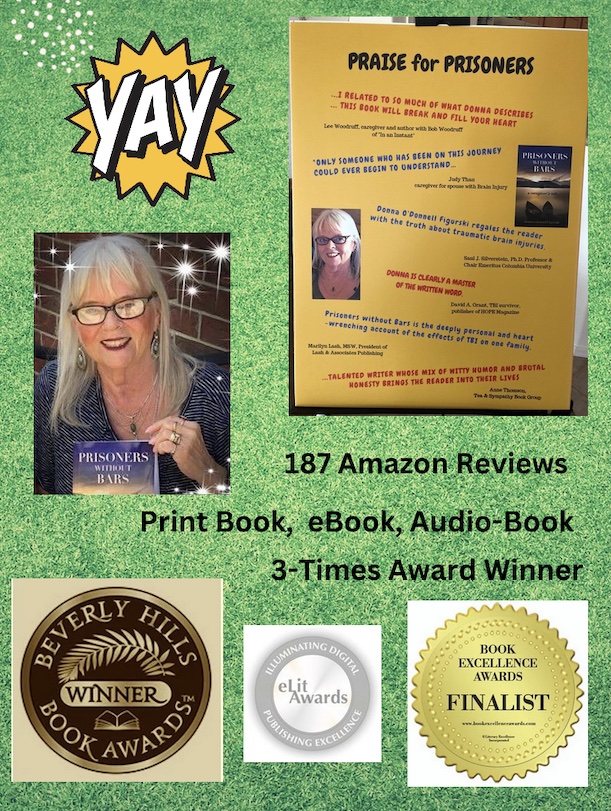


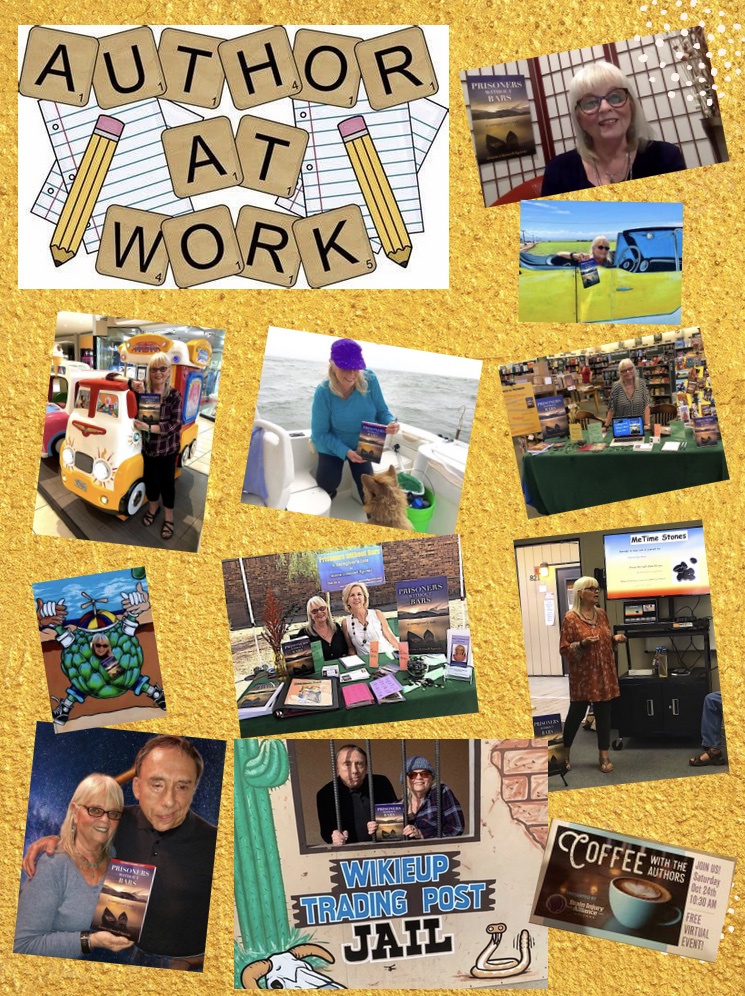
Image Credits
Donna O’Donnell Figurski
so if you or someone you know deserves recognition please let us know here.

